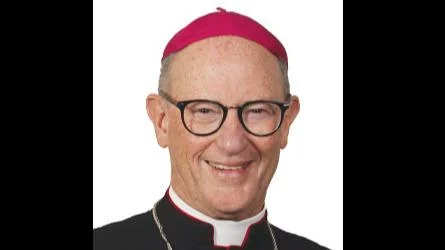
Rev. James D. Conley, D.D., S.T.L. | Diocese of Lincoln website
The Diocese of Lincoln has concluded that a first-class relic of St. Gemma Galgani, which appeared to move on its own at the Newman Center at the University of Nebraska-Lincoln, was not exhibiting supernatural activity. The incident gained attention after a video showing the movement circulated widely on social media and drew visitors to view the relic.
Father Caleb La Rue, chancellor for the Diocese of Lincoln, led an investigation with another priest to determine if there was a natural explanation for the phenomenon. “Not that these things can’t happen — of course, they absolutely can,” La Rue said. “God can work in any myriad of ways.”
La Rue explained that their inquiry revealed a bent hook as the cause: when similar relics were hung on the same hook, they moved in a comparable manner. Once St. Gemma’s relic was removed from this hook, it stopped moving. He attributed this to uneven weight distribution due to the bend in the hook.
Despite ruling out supernatural causes in this case, La Rue emphasized that miracles do occur and encouraged people to notice ordinary signs of God’s presence. “Even if it’s not supernatural, I think there’s something that God wants all of us to take away from this experience because he either willed or permitted it to happen,” he said.
Michael O’Neill, who tracks reported miracles and hosts EWTN’s “Miracle Hunter,” noted that modern Church investigations focus primarily on healing miracles, Marian apparitions, Eucharistic miracles, weeping statues or icons, and incorrupt saints. He stated: “Traditionally, only a few types of miracles are ever investigated, specifically healing miracles, Marian apparitions, Eucharistic miracles, weeping statues or icons, and incorrupt saints. And each has their own investigative process.” O’Neill added that moving relics are generally not subject to formal investigation today.
La Rue acknowledged that miraculous movement is possible but stressed caution: “It’s, of course, possible. There’s far more miraculous things that happen every day... But at the same time, the Church is cautious for a reason because she wants our attention to be on truly miraculous things.”
The Diocese highlighted ongoing belief in everyday miracles—especially regarding the Eucharist—as central to Catholic faith. In its statement shared Thursday: “God surrounds us with miracles every day, with the Lord’s real presence in the Blessed Sacrament being preeminent of all.”
La Rue described how students and staff participate in all-day Eucharistic adoration at the Newman Center during such events: “The entire time this was happening, there was Eucharistic exposition going on.” He called attention to what Catholics consider "the ultimate sign" of God's presence through the Eucharist.
O’Neill pointed out recent changes in official Church norms for recognizing alleged miracles; rather than declaring events explicitly supernatural today, authorities may use terms like "nihil obstat," meaning nothing obstructs further consideration.
Reflecting on reactions from those hoping for a miracle at Newman Center La Rue said: “It doesn’t necessarily need to be something spectacular... there’s lots of little ways that God is constantly showing us his care for us.”
La Rue also spoke about growth within Newman Center's community life: “It’s a place where young people are really encountering Our Lord and encountering each other and building strong friendships and lasting friendships founded on shared love of God and wanting to live a full life...” Last year about 70 individuals joined the Catholic Church through its OCIA program—a number he attributes largely to personal initiative among new members.
Sunday Mass attendance continues strong at Newman Center as well: “I’ve been able to see just the reality of young people recognizing that the world doesn’t have the answers — that the things of the world aren’t satisfying,” La Rue said.





 Alerts Sign-up
Alerts Sign-up